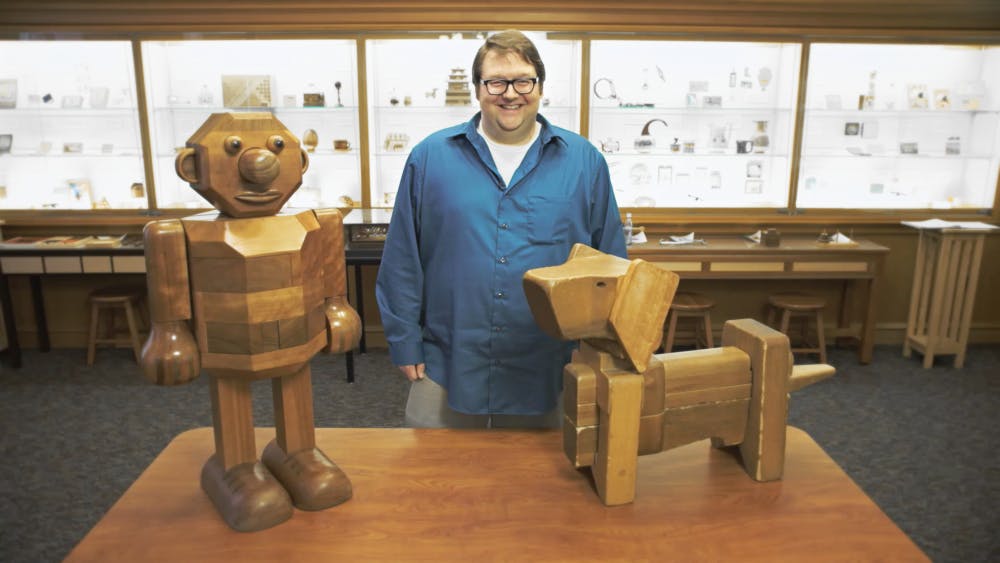Andrew Rhoda flipped a polished metal cube over in his hands. A few more minutes of twisting and the cube fell apart into four pieces.
The next step was to put it back together. He said that part took a few months.
But after putting the puzzle — called “Cast Marble” and made by puzzle manufacturer Hanayama — back together, Rhoda disassembled and reassembled the cast-metal puzzle a few times to understand its mechanism. This was the first mechanical puzzle Rhoda had mastered on his own.
“That was my first really big mechanical puzzle epiphany,” Rhoda said.
Now Rhoda’s interest in puzzles has turned into a career as curator of puzzles at the Lilly Library at IU. He is the only puzzle curator in the world.
Rhoda said the more than 30,000 puzzles included in the library’s collection represents a harmonious combination of math and art.
The result of this combination is a beautiful puzzle, both in aesthetics and in the simplicity of its design, he said. But not all puzzles are beautiful in the typical sense of the word.
“The beauty is not in the object itself,” he said. “It’s in the mechanism of the puzzle.”
Rhoda said a good puzzle maker must also find a balance between frustrating difficulty and mindless simplicity.
“When you strike that balance, there’s this intangible quality,” he said. “There’s this amazing feeling of satisfaction when solving it.”
Another distinguishing quality of the library’s collection is its international scope, Rhoda said. The collection stretches across five continents and includes pieces from countries such as Japan, China, Australia, Germany and Mongolia.
He said cultures around the world play with puzzles, suggesting that humans are naturally drawn to both the frustrations and pleasures of unlocking their mysteries.
“I see people struggle with a puzzle and walk away in a huff,” he said. “But they come back and work through it. They just need to solve that mystery.”
The collection’s oldest puzzle is a padlock the size of a ring that dates back to Roman times. Rhoda said the padlock represents the original practical uses of puzzles before they became an object of entertainment.
Jerry Slocum, the historian and puzzle collector for whom the Slocum Puzzle Collection at IU is named, published a book called "Romano-Celtic Mask Puzzle Padlocks: A Study in their Design, Technology and Security" that focuses on these Roman puzzle padlocks and their histories.
He said the collection also included puzzle snuff boxes that kept volatile matchsticks from falling out and producing spontaneous fire balls.
Another was an elaborate master lock complete with hasps, moving pieces and levers. These puzzles were used as final exams for locksmiths, Rhoda said.
But it was only recently in puzzle history, as late as the 19th century, that they were considered objects of art and entertainment, he said.
“There’s an interesting shift from the practical to the entertaining and beautiful,” he said. “And now you’re seeing another shift back to the practical with puzzles being used in education.”
Rhoda said the educational value of puzzles involves their ability to teach problem-solving, geometry and manipulating the scientific method.
“Puzzles are a way to teach critical thinking without hitting people over the head with it,” he said.
Puzzles also have an academic significance in mathematics, science and computer science, he said. IU art history professors have also approached puzzles as a visual art while cognitive science professors have used them to study how the mind works, he said.
But above all, Rhoda said puzzles teach persistence.
“Persistence is really the first tool in any puzzle enthusiast’s tool box,” he said. “What comes first is that stubbornness. Everything else follows when you sit down and try it.”




